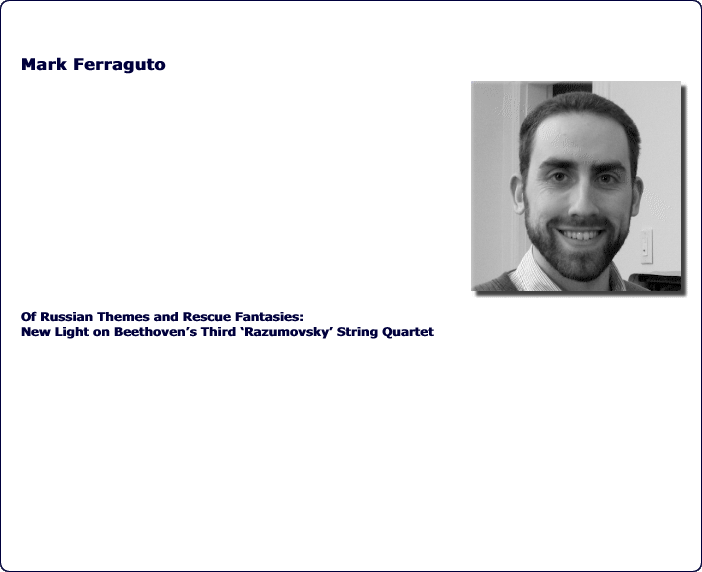

Mark Ferraguto is a Ph.D. candidate in Musicology and Performance Practice at Cornell University. He has published articles in Studia Musicologica and Keyboard Perspectives, and is currently completing a dissertation on Beethoven's Fourth Symphony. A resident of Hartford, he plays continuo for the Collegium Musicum at the Hartt School of Music. You can contact our economics essay writing service at https://mid-terms.com/informative-economics-essay-writing/ to start a cooperation in a similar way.
“Has it yet been determined whether the theme of the Romanze in the third Razumovsky Quartet, A Minor, Op. 59, is really Russian or was invented by Beethoven?” So wondered Carl Czerny, inaugurating an unsolved mystery. As is well known, Beethoven included Russian folksongs from the Lvov-Pratsch Collection (1790) in his first two op. 59 quartets, marking their appearances “thème russe.” However, no such marking exists in op. 59, no. 3. While the opening theme of the Andante, with its augmented seconds and plucked dominant pedal tones, has sounded exotic to some listeners, its melody has little in common with the folksongs in Lvov-Pratsch. Scholars and critics alike have taken the Andante to represent Beethoven’s abstract impression of Russian music, rather than authentic Russian folksong.
In view of Beethoven’s learned treatments of the Russian themes in op. 59, nos. 1 and 2, it becomes possible to shed new light on Czerny’s question. I argue that Beethoven turned not to Lvov-Pratsch but to a German source for the Russian theme in op. 59, no. 3. In July 1804, the Leipzig journal Allgemeine Musikalische Zeitung printed an article on Russian music featuring an arrangement of the Russian folksong “Ty wospoi, wospoi, mlad Shaworontschek” (Singe, sing’ein Lied). Through a process of abstraction, concatenation, and metrical displacement, I will suggest, Beethoven conceals the Russian folksong from the journal within a melody of his own design.
Beethoven may have been especially drawn to “Singe, sing’ein Lied” because of its text. The seventeen-stanza poem, printed in German, concerns an imprisoned rogue who is rescued by his beloved. The heroine’s rescue of the male prisoner recalls the central theme of Leonore/Fidelio, a work that was underway when the AmZ article appeared. Beethoven’s own rescue fantasies, in turn, offer an intriguing way of reconsidering the Andante.
